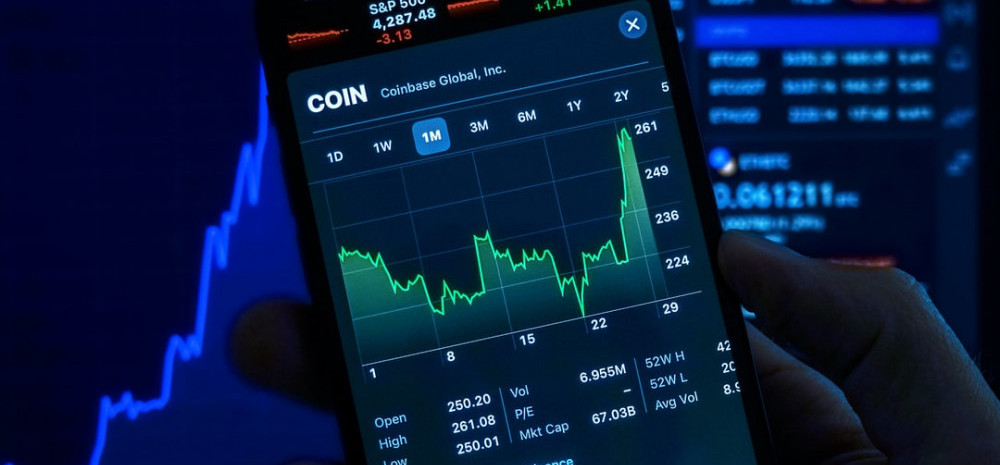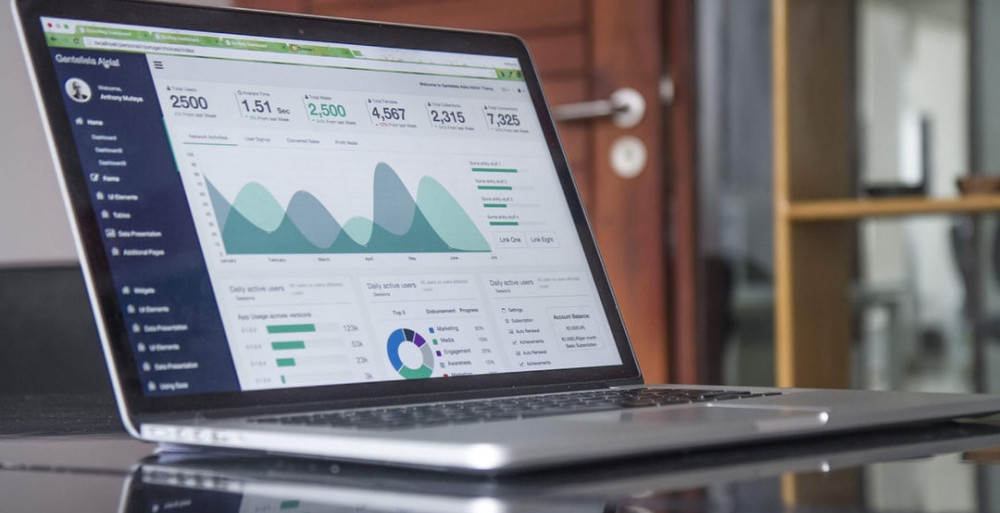
What Is Blockchain? How Does It Work?

If you have been following banking, investing, or cryptocurrency over the last ten years, you may have heard the term “blockchain,” the record-keeping technology behind the Bitcoin network.
Blockchain seems complicated, and it definitely can be, but its core concept is really quite simple. A blockchain is a type of database. To be able to understand blockchain helps to first understand what a database actually is. A database is a collection of information that is stored electronically on a computer system. Information, or data, in databases is typically structured in table format to allow for easier searching and filtering for specific information.
What is blockchain?
A blockchain is a new kind of database. A blockchain is the network of people, devices, and machines working together to maintain and update the data in the database. Blockchain is built on what is called a distributed ledger. In plain English, distributed ledger describes a database system in which all of the information that is needed to keep the system operating is stored on many different computers. In a traditional database, each computer keeps its own copy of the data. A distributed ledger system allows all of the computers to store and share the same information, called a distributed ledger. Each node on the network runs a computer program that holds the blockchain database. The programs are based on the Bitcoin protocol, the open-source ledger used by Bitcoin.
How does blockchain work?
Now that we have an understanding of a database, let’s take a look at how blockchain works. A blockchain is essentially a distributed database. In other words, instead of one computer in a building storing a database of information, there are hundreds or thousands of computers around the world sharing the same database.
In the blockchain world, a database is much more than just a data structure. Blockchain is a distributed ledger a continuously growing, mutable digital database that is kept safe and secure by the use of cryptography. Smart money is increasingly turning to blockchain for its ability to provide a solution for one of the biggest challenges facing the digital economy: securely moving, verifying, and safely storing data. According to research firm IDC, 90% of all blockchain projects are focused on improving payment security. Blockchain applications and services are now being offered by major tech giants and startups, offering more and more robust products for companies looking to eliminate inefficiencies and create unprecedented transparency.
What is a database?
A database can be thought of as a virtual collection of all information related to a specific activity, and the information is kept in this virtual collection as a record of transactions. This database is stored electronically in a location that can be accessed by a computer. This concept is also known as a “shared digital library,” because the information is shared with a very large network of computers. The information in the database is stored so that everyone in the network has access to it, and can also make copies. This allows you to access the information while others have access to it. Once the information is in the database, it stays there permanently. This is exactly how a record-keeping system works.

Blockchain and bitcoin
A blockchain is a type of database that uses “blockchains” to form a database. It creates “blocks” or logical units of information, which are each linked to each other by what is called a “hash” or cryptographic key. The idea is that if something were to happen to a blockchain, like losing access to a computer, the information would still be completely accurate. The concept behind bitcoin is that someone whose computer is hacked, or if they don’t have the ability to access their wallet can have the information printed out in order to transfer bitcoins (or whatever cryptocurrency it is) without the bank knowing. In order to help that process along, a “coin” is created which is an item with a unique serial number associated with it.
This post contains affiliate links. Please please read my Disclaimer for more information
What are the different types of blockchains?
The Bitcoin blockchain has only digital currency as currency. Unlike most cryptocurrencies that require a digital wallet, Bitcoin is stored in the form of a blockchain. The Ethereum blockchain stores data in the form of smart contracts, also known as scripts. The Tron blockchain stores and executes data in the form of smart contracts. And the Ethereum blockchain can also execute scripts in the form of a proxy chain. A proxy chain is the equivalent of execution, that is, a distributed autonomous organization (DAO), in computer science, which is a contractless autonomous organization that issues a token called a “tokens.” These contracts enable the creation of contracts that run autonomously, outside of the normal control of any single institution.
Applications of blockchain in education, finance, law, and healthcare
Blockchain can be used in a variety of different industries, but its most common use is in financial services. A very popular use of blockchain in finance is in financial trading. The blockchain contains all the information about financial trades. The blockchain also records the information, which allows traders and traders of the future to track the sale and purchase of stocks and other financial assets. But beyond financial services, blockchain can be used in many other sectors of the economy. E-commerce applications Some of the more significant blockchain-based e-commerce applications are prediction markets, crowdsourcing, and artificial intelligence.
What are the main advantages of blockchain?
A blockchain system is both secure and trustworthy, which allows a lot of things to happen that wouldn’t be possible in the normal world. For example, we use credit cards every day, but it’s possible to steal the money if you steal the information about the card (how much is on it, how much is available to spend, etc.). When you do this, you put the card in question out of business. With a blockchain system, thieves have a very hard time accessing and stealing information. So, with blockchain, you can leave your card at an ATM, get your money back when you put the card back in your wallet, and your card is not in a database of credit cards that can be stolen.
What are the limitations of blockchain technology?
In order to be a successful blockchain, a cryptocurrency must have all of the following attributes. A blockchain must have an organization, a website, or other associated social media to distribute the currency. The organization or website must be easily traceable through publicly available records. Each organization or website that has the ability to distribute a currency must be able to have it validated and in control of its own “keys.” Each key that the organization has is akin to an authorization token, or a digital signature. The currency must have an identifiable and secure address on the blockchain. Every transaction on the blockchain must involve a specific cryptocurrency for the transaction to be valid.
How is a blockchain created and maintained?
The first step in creating a blockchain is to distribute and verify a new set of data through a network of computers that are all working to verify the information. These computers, called “nodes,” verify the transaction information by making sure that the parties involved in a transaction are legitimate and meet minimum requirements. The blockchain network is open source. Anyone can run a node. In order to maintain the integrity of the blockchain network, nodes are required to update the transaction information as it changes. This ensures that the integrity of the database is maintained and that it cannot be changed retroactively.

Conclusion
While there are other types of databases that are more traditional, such as relational databases and document databases, it is fair to say that most databases are designed to hold information in a database format. Blockchain is not a database, but it is a type of database with one key feature: that it is distributed. Blockchain is distributed not because it is being stored across many different computers around the world, but because it is stored on all the computers in the system and stored in a decentralized manner. It is managed by the computers that store it. Although the term “blockchain” has been around for many years, it really took off after the creation of the Bitcoin blockchain.
“If you have any feedback about what is a blockchain that you have tried out or any questions about the ones that I have recommended, please leave your comments below!”
NB: The purpose of this website is to provide a general understanding of personal finance, basic financial concepts, and information. It’s not intended to advise on tax, insurance, investment, or any product and service. Since each of us has our own unique situation, you should have all the appropriate information to understand and make the right decision to fit with your needs and your financial goals. I hope that you will succeed in building your financial future.

























 If you are switching jobs, you’ll soon find out that the W-4 form that every employee has to fill out in order to determine the amount of taxes that are withheld from each paycheck has changed. The Internal Revenue Service (IRS) says it has revised the form in order to increase its transparency and the accuracy of the payroll withholding system.
If you are switching jobs, you’ll soon find out that the W-4 form that every employee has to fill out in order to determine the amount of taxes that are withheld from each paycheck has changed. The Internal Revenue Service (IRS) says it has revised the form in order to increase its transparency and the accuracy of the payroll withholding system.